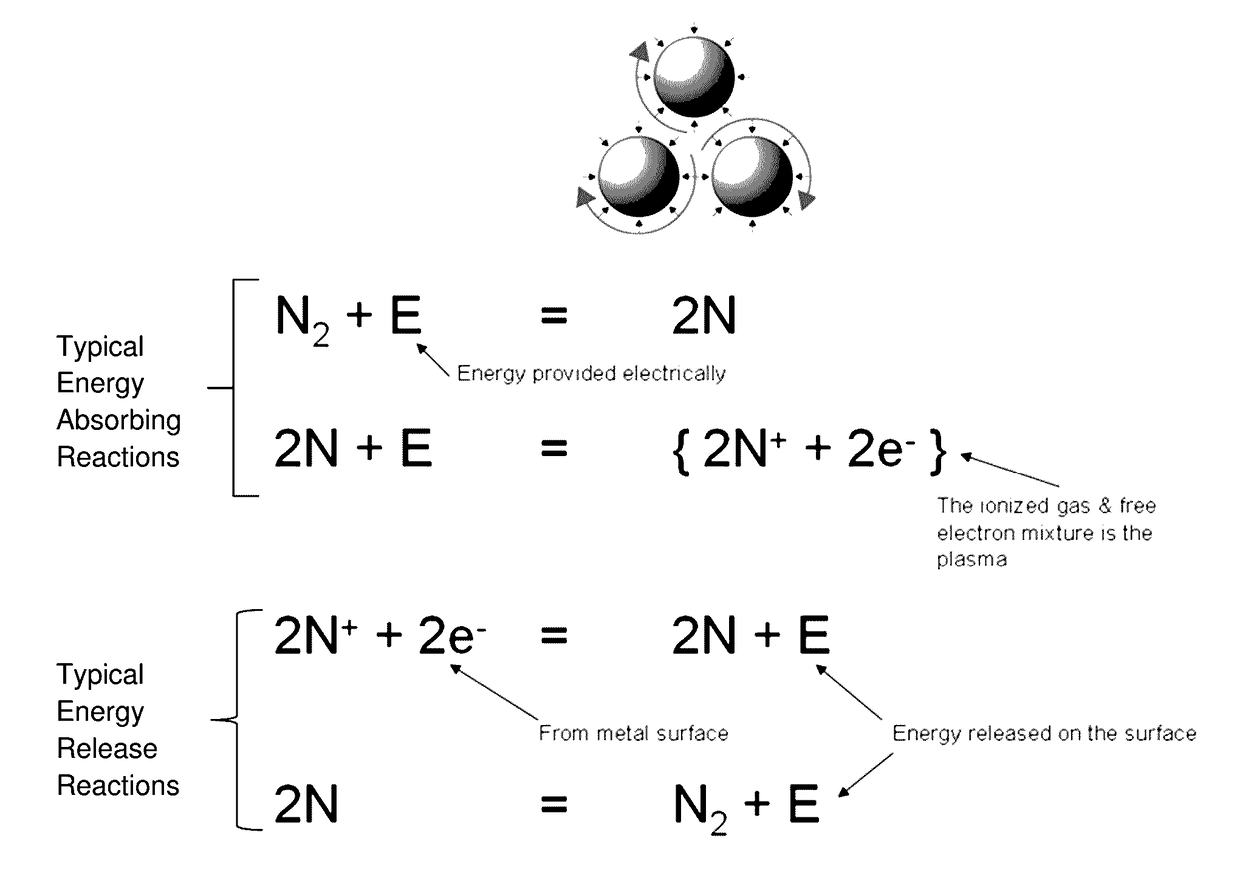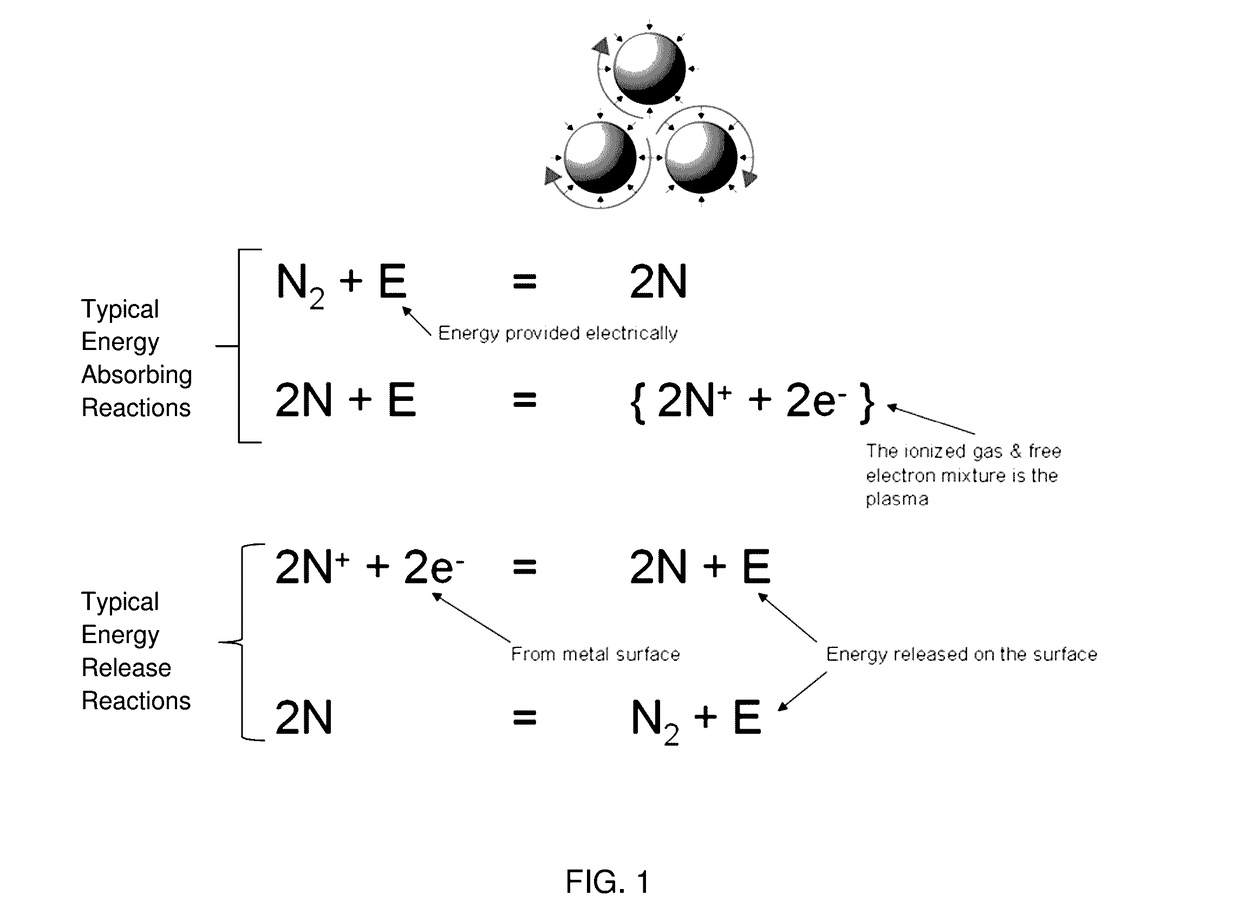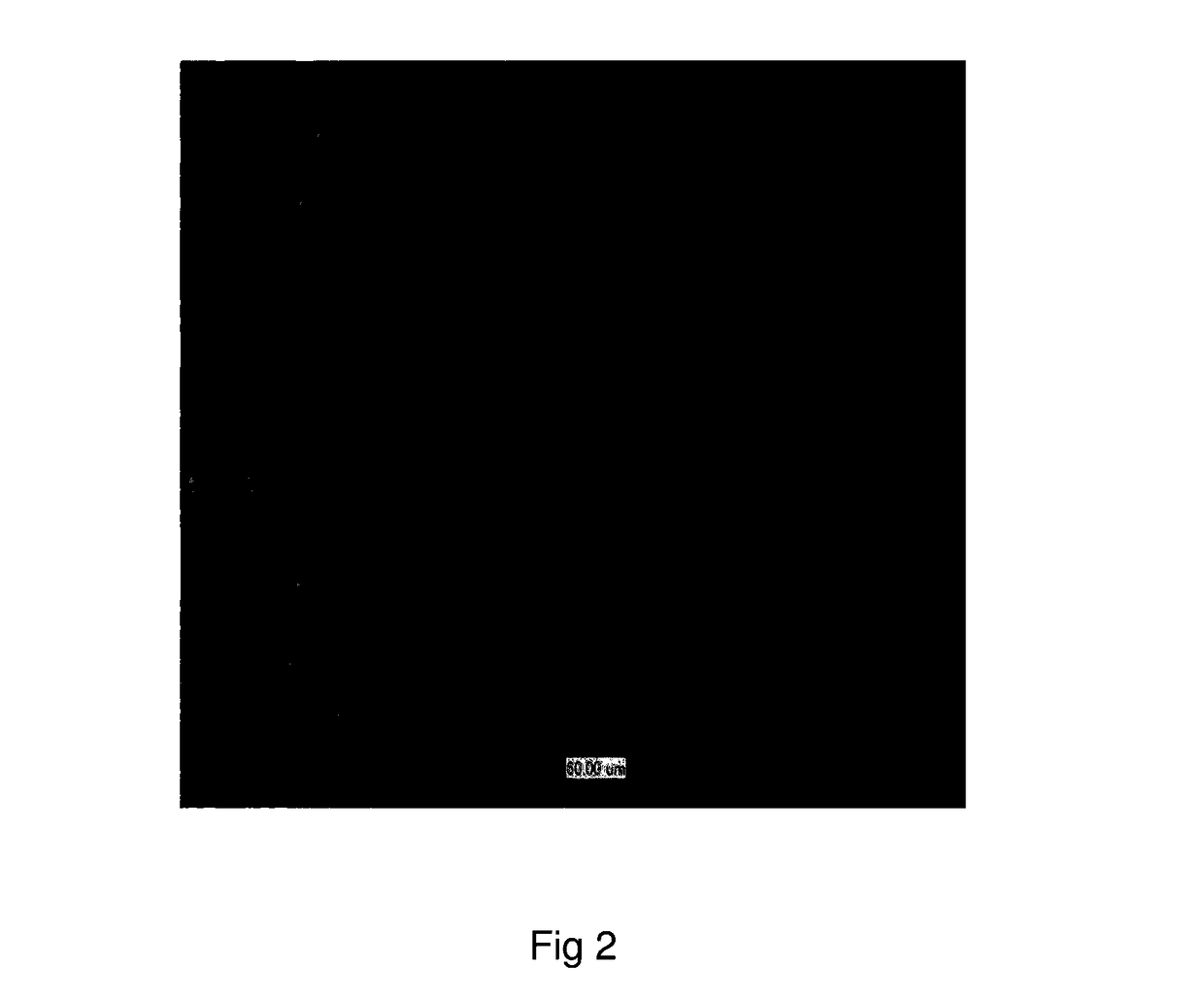Thermal plasma treatment method
a treatment method and plasma technology, applied in the field of plasma treatment method, can solve the problems of general inefficiency of the process itself, general inefficiency of the process, environmental protection, etc., and achieve the effects of preventing the cracking of heating elements, increasing the thickness and porosity of materials, and increasing the pore siz
- Summary
- Abstract
- Description
- Claims
- Application Information
AI Technical Summary
Benefits of technology
Problems solved by technology
Method used
Image
Examples
Embodiment Construction
[0030]In an embodiment of the method, a coating, slurry, braze or other material is applied to the surface of an object. The substrate and the applied medium are then wrapped with a tape or foil. The tape or foil may be composed in part, or in total, of carbon or carbon material. A film of powder may be used as or in place of the foil. The substrate, applied material and wrapping are subjected to thermal plasma. The wrapping acts to attract the plasma or specific parts of the plasma in a manner that leads to rapid heat-up of the wrapped areas. The surface treatment is thus performed in a more efficient manner as compared to currently used processes that require far greater time and energy.
[0031]The method and apparatus of the method and the compositions of the foil and treatable combinations are special and involve selective ion electron combinations, particularly ones that change with temperatures. Activity increases above 1100° C. Copper brazing, hardfacing and de-burring become p...
PUM
| Property | Measurement | Unit |
|---|---|---|
| temperature | aaaaa | aaaaa |
| diameter | aaaaa | aaaaa |
| Ra | aaaaa | aaaaa |
Abstract
Description
Claims
Application Information
 Login to View More
Login to View More - R&D
- Intellectual Property
- Life Sciences
- Materials
- Tech Scout
- Unparalleled Data Quality
- Higher Quality Content
- 60% Fewer Hallucinations
Browse by: Latest US Patents, China's latest patents, Technical Efficacy Thesaurus, Application Domain, Technology Topic, Popular Technical Reports.
© 2025 PatSnap. All rights reserved.Legal|Privacy policy|Modern Slavery Act Transparency Statement|Sitemap|About US| Contact US: help@patsnap.com



